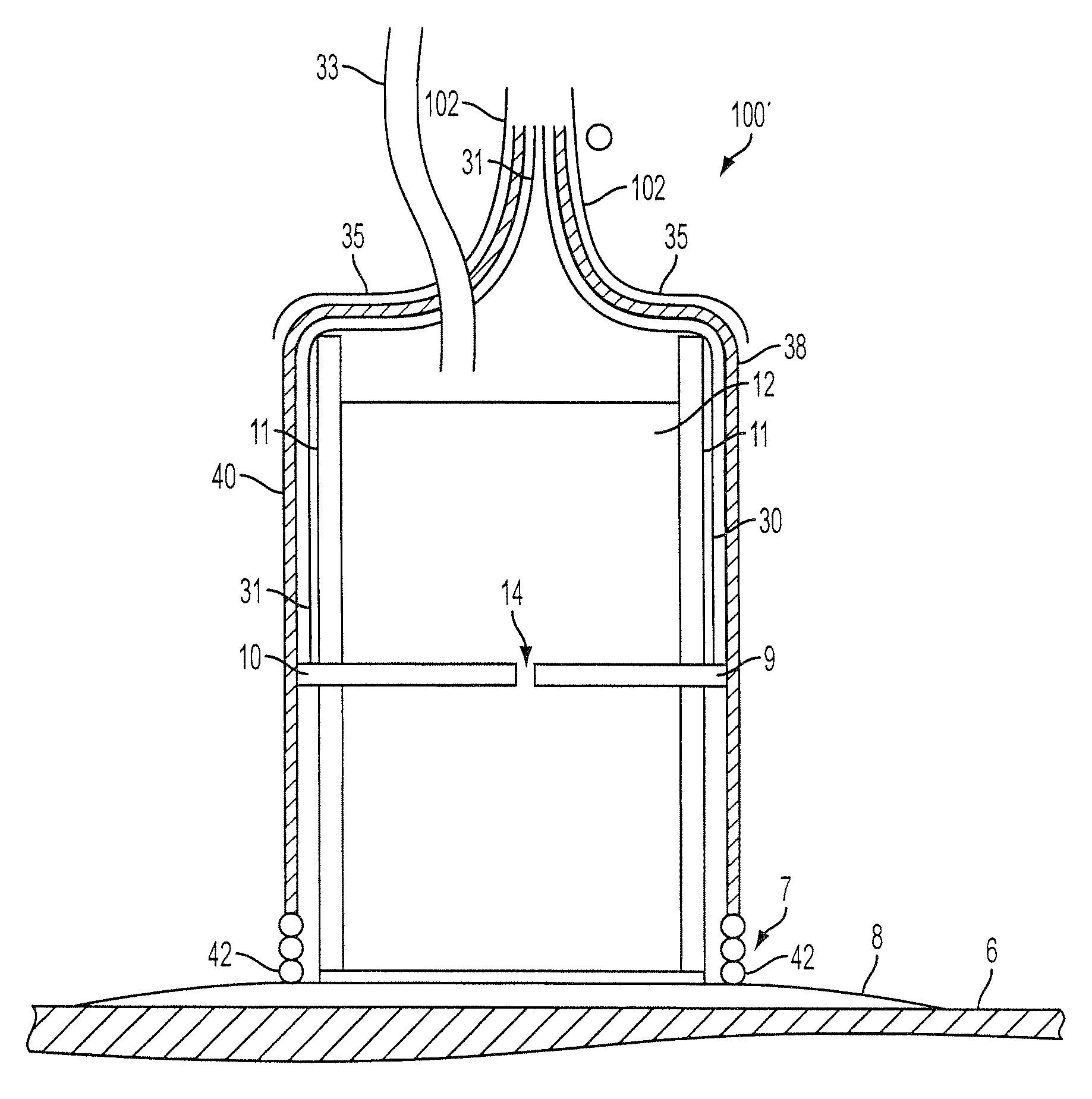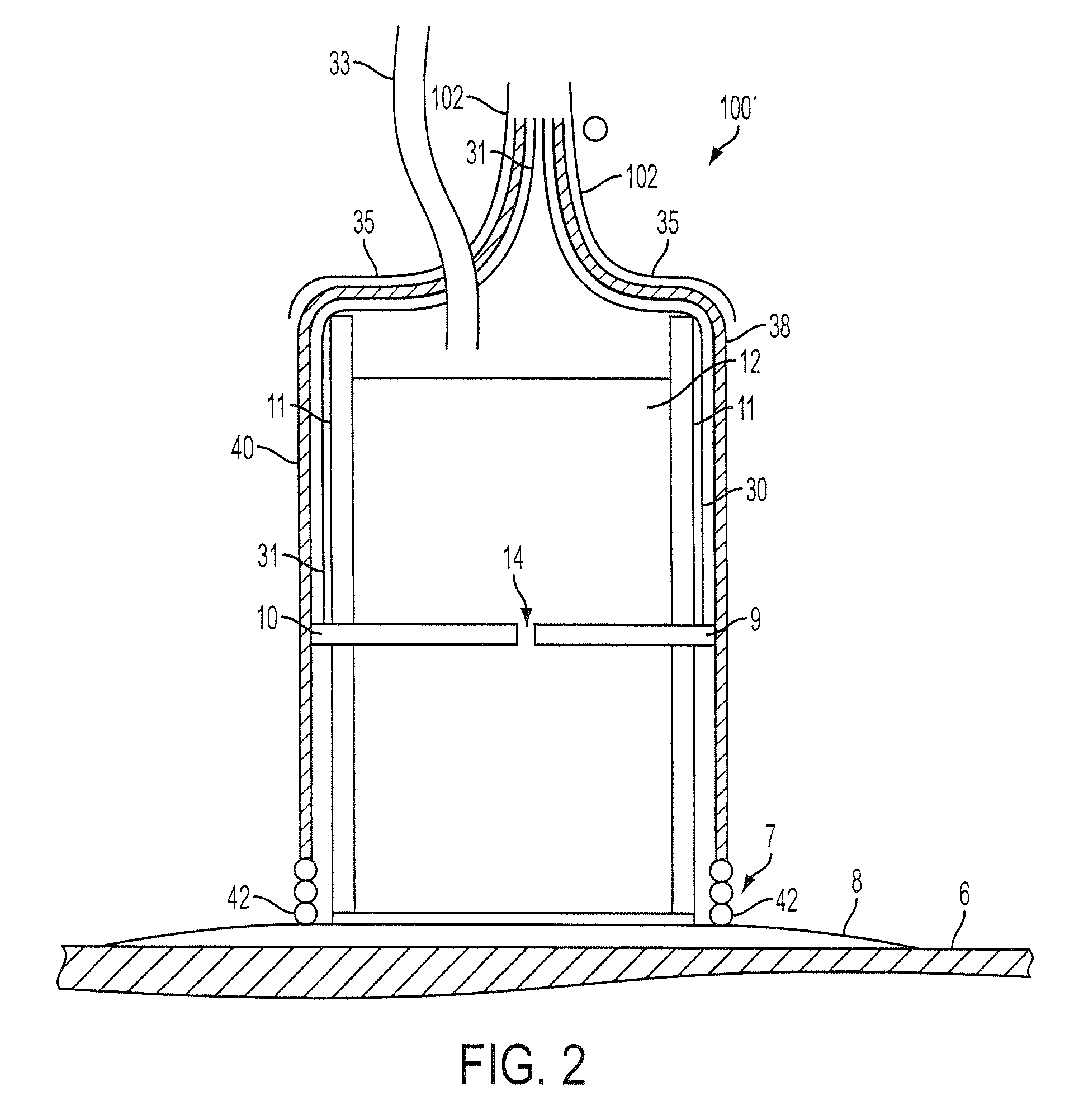Method for soft tissue treatment
a soft tissue and non-invasive technology, applied in the field of medical devices, can solve the problems of invasive character, difficult to treat large areas of soft tissue, and high intensity of focused ultrasound (hifu), so as to reduce unwanted damage to skin layers, improve the effect of cell disruption, and high intensity
- Summary
- Abstract
- Description
- Claims
- Application Information
AI Technical Summary
Benefits of technology
Problems solved by technology
Method used
Image
Examples
Embodiment Construction
[0020]FIG. 1 shows a device for treating soft body tissues, such as adipose tissue, in accordance with one embodiment of the invention. An applicator 100, to be described in detail below, is adapted to be applied to the skin of an individual 105. The applicator 100 is connected to a control unit 101 via electrical wires in a cable 102. The control unit 101 includes a power source 108. The control unit 101 also contains a temperature affecting unit 112 that cools a fluid such as ethanol or water for maintaining the applicator 100 at a predetermined temperature as explained below. The control unit 101 has an input device such as a keypad 110 that allows an operator in input selected values of parameters of the treatment, such as the intensity of the positive and negative phases, the duration of the pulses and a pulse repetition rate.
[0021]FIG. 2 shows an applicator 100′ that may be used for the applicator 100 shown in FIG. 1, in accordance with one embodiment of the invention. The app...
PUM
 Login to View More
Login to View More Abstract
Description
Claims
Application Information
 Login to View More
Login to View More - R&D
- Intellectual Property
- Life Sciences
- Materials
- Tech Scout
- Unparalleled Data Quality
- Higher Quality Content
- 60% Fewer Hallucinations
Browse by: Latest US Patents, China's latest patents, Technical Efficacy Thesaurus, Application Domain, Technology Topic, Popular Technical Reports.
© 2025 PatSnap. All rights reserved.Legal|Privacy policy|Modern Slavery Act Transparency Statement|Sitemap|About US| Contact US: help@patsnap.com



